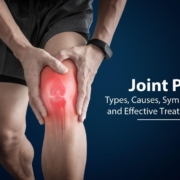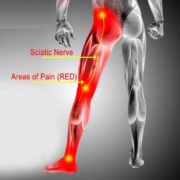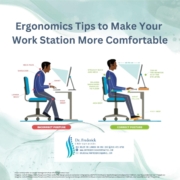7 Essential Tips for Effectively Managing Hip Pain
Dealing with hip pain can feel like navigating a maze—one wrong turn and you find yourself in a world of discomfort and frustration. Whether it’s the result of an injury, arthritis, or simply the wear and tear of daily life, hip pain can significantly impact your mobility and quality of life. But fear not! In this listicle, we present “7 Essential Tips for Effectively Managing Hip Pain,” designed to guide you through practical strategies that can help alleviate discomfort and restore your active lifestyle. From simple lifestyle adjustments to targeted exercises, each tip offers valuable insights that empower you to take control of your hip health. Read on to discover how you can step back into a life free from the constraints of hip pain.
1) Understand Your Pain: Begin by identifying the source of your hip pain. Whether it’s due to arthritis, an injury, or overuse, knowing the cause can help you tailor your management strategies effectively
To effectively manage hip pain, the first step is to pinpoint its origin. Understanding whether your discomfort stems from conditions like arthritis, an injury, or overuse can significantly influence your approach to relief. Each source of pain has its own set of characteristics and requires tailored strategies for management. For instance, if arthritis is the culprit, focusing on anti-inflammatory methods and gentle exercises may be beneficial. Conversely, an injury might necessitate rest and rehabilitation exercises to promote healing.
Consider keeping a pain journal to track your symptoms and identify patterns. Note when the pain occurs, its intensity, and any activities that exacerbate it. This record can help you and your healthcare provider determine the underlying issues. Here are some helpful categories to include in your journal:
| Category | Details |
|---|---|
| Date | When did you experience the pain? |
| Intensity | Rate your pain on a scale of 1-10. |
| Activities | What were you doing when the pain started? |
| Duration | How long did the pain last? |
| Relief Methods | What did you do to alleviate the pain? |
2) Stay Active, But Smart: Engage in low-impact exercises like swimming or cycling that can strengthen the muscles around your hip without putting too much strain on the joint. Regular movement can help alleviate stiffness and improve mobility
Engaging in low-impact exercises can be a game-changer for those dealing with hip pain. Activities such as swimming and cycling provide a gentle way to strengthen the muscles surrounding the hip joint without the harsh impact associated with running or jumping. These forms of exercise not only enhance muscle strength but also promote flexibility and endurance, which are crucial for maintaining mobility. By incorporating these activities into your routine, you can experience a significant reduction in stiffness and an overall improvement in your hip function.
To make the most of your exercise regimen, consider the following tips:
- Start Slow: Gradually increase the intensity and duration of your workouts to avoid overexertion.
- Warm-Up: Always begin with a gentle warm-up to prepare your muscles and joints for activity.
- Listen to Your Body: Pay attention to any discomfort and modify your exercises accordingly.
- Cross-Train: Mix different activities to prevent overuse injuries and keep your routine enjoyable.
3) Incorporate Stretching: Regular stretching can enhance flexibility and reduce tension in the hip area. Consider integrating gentle stretches into your daily routine, focusing on the hip flexors, quadriceps, and hamstrings
One of the most effective ways to combat hip pain is by incorporating a regular stretching routine into your daily activities. Stretching not only enhances flexibility but also helps to alleviate tension in the hip area, which can significantly improve your overall mobility. Focus on gentle stretches that target the key muscle groups surrounding your hips. Some beneficial stretches include:
- Hip Flexor Stretch: Kneel on one knee and push your hips forward to feel a gentle stretch in the front of your hip.
- Quadriceps Stretch: Stand on one leg, pull your other foot towards your buttocks, and hold to stretch the front of your thigh.
- Hamstring Stretch: Sit on the floor with one leg extended and reach towards your toes to stretch the back of your thigh.
To maximize the benefits of your stretching routine, consider setting aside a few minutes each day to focus on these areas. Consistency is key, so try to integrate these stretches into your morning or evening ritual. Additionally, you can create a simple stretching schedule to keep track of your progress:
| Day | Stretch Focus | Duration |
|---|---|---|
| Monday | Hip Flexors | 5 minutes |
| Wednesday | Quadriceps | 5 minutes |
| Friday | Hamstrings | 5 minutes |
By dedicating just a few minutes to these stretches, you may find a significant reduction in discomfort and an improvement in your hip function over time. Remember to listen to your body and avoid pushing yourself too hard—gentle, sustained stretches are the key to success.
4) Use Ice and Heat Therapy: Alternate between ice packs and heat pads to manage pain and inflammation. Ice can help reduce swelling, while heat can relax tight muscles and improve blood circulation
Managing hip pain effectively often requires a combination of techniques, and incorporating ice and heat therapy into your routine can be a game-changer. Ice therapy is particularly beneficial during the initial stages of pain, especially if there is swelling or inflammation. Applying an ice pack wrapped in a cloth for about 15-20 minutes can help numb the area and reduce swelling. Heat therapy, on the other hand, is ideal for easing stiffness and promoting relaxation in tight muscles. A warm heat pad or a hot water bottle can be applied for similar timeframes, allowing blood flow to increase and delivering essential nutrients to the affected area.
To optimize your ice and heat therapy sessions, consider the following tips:
- Timing: Alternate between ice and heat every few hours to maximize benefits.
- Duration: Limit each application to 15-20 minutes to prevent skin damage.
- Protection: Always use a cloth or towel to protect your skin from direct contact with ice or heat.
- Listen to Your Body: Pay attention to how your body responds; if pain worsens, discontinue use.
5) Maintain a Healthy Weight: Carrying excess weight can put additional stress on your hips. A balanced diet combined with regular exercise can help you achieve and maintain a healthy weight, reducing pain and discomfort
Maintaining a healthy weight is crucial for those dealing with hip pain. Excess weight can lead to increased pressure on your joints, exacerbating discomfort and limiting mobility. To achieve a balanced weight, consider adopting a diet rich in whole foods, such as fruits, vegetables, lean proteins, and whole grains. These foods not only provide essential nutrients but also help keep you feeling full and satisfied, reducing the temptation to indulge in unhealthy snacks. Additionally, staying hydrated by drinking plenty of water can aid in weight management and overall joint health.
Incorporating regular exercise into your routine is equally important. Aim for a mix of cardiovascular activities and strength training exercises that are gentle on your hips. Low-impact exercises like swimming, cycling, and walking can help burn calories without putting undue stress on your joints. To keep track of your progress, consider using a simple table to monitor your weight loss journey and celebrate small victories along the way:
| Week | Weight (lbs) | Notes |
|---|---|---|
| 1 | 180 | Started a new workout routine |
| 2 | 178 | Incorporated more vegetables |
| 3 | 175 | Feeling more energetic |
| 4 | 173 | Joined a fitness class |
6) Invest in Supportive Footwear: The right shoes can make a significant difference in hip pain management. Look for footwear that provides adequate support and cushioning to help distribute body weight evenly
Choosing the right footwear can be a game-changer when it comes to managing hip pain. Shoes that offer adequate support and cushioning can help alleviate pressure on your hips and improve your overall posture. When shopping for shoes, look for features such as arch support, a cushioned insole, and a contoured footbed. These elements work together to distribute body weight evenly, reducing strain on your hips and joints. Avoid high heels or overly flat shoes, as these can exacerbate your discomfort and lead to further complications.
To help you make informed decisions, consider the following key characteristics of supportive footwear:
| Feature | Benefit |
|---|---|
| Arch Support | Helps maintain proper alignment and reduces stress on the hips. |
| Cushioned Insole | Absorbs shock and minimizes impact during movement. |
| Wide Toe Box | Prevents cramping and allows for natural foot movement. |
| Heel Height | A moderate heel can promote better posture and balance. |
Additionally, consider investing in custom orthotics if you have specific foot conditions or need extra support. These personalized inserts can enhance the fit of your shoes and further alleviate hip pain by correcting foot alignment. Remember, the right pair of shoes can not only improve your comfort but also empower you to stay active, which is crucial for managing hip pain effectively.
7) Consult a Professional: Don’t hesitate to seek advice from healthcare professionals, such as physical therapists or orthopedic specialists. They can offer personalized treatment plans and recommend exercises that are safe and effective for your specific condition
When grappling with persistent hip pain, reaching out to healthcare professionals can be a game changer. Experts such as physical therapists and orthopedic specialists possess the knowledge and experience to assess your individual condition thoroughly. They can perform a range of diagnostic tests and evaluations to pinpoint the root cause of your discomfort. This ensures that any recommendations are tailored specifically to your needs, rather than relying on generic advice that might not address your unique situation.
During consultations, professionals can provide you with a variety of treatment options, including:
- Personalized exercise plans: Designed to strengthen the muscles around the hip and improve flexibility.
- Manual therapy techniques: Such as joint mobilization to alleviate pain and restore function.
- Education on posture and body mechanics: To prevent further injury and promote better movement patterns.
- Guidance on activity modifications: To help you engage in daily activities without exacerbating your pain.
Consider scheduling regular follow-ups to track your progress and make necessary adjustments to your treatment plan. This collaborative approach not only empowers you to take control of your recovery but also fosters a supportive relationship with your healthcare provider, ensuring that you stay on the path to pain relief and improved mobility.
Final Thoughts
As we conclude our exploration of these seven essential tips for effectively managing hip pain, remember that each journey toward relief is unique. Whether you’re integrating gentle stretches into your daily routine, consulting with healthcare professionals, or simply taking the time to listen to your body, every small step counts. Embrace the power of knowledge and self-care as you navigate your path to comfort and mobility. By applying these strategies, you’re not just managing pain; you’re reclaiming your quality of life. Stay proactive, stay informed, and above all, stay hopeful. Here’s to a future filled with movement and joy!









Leave a Reply
Want to join the discussion?Feel free to contribute!